
Naval Air Station Whidbey Island (NASWI) is a naval air station of the United States Navy located on two pieces of land near Oak Harbor, on Whidbey Island, in Island County, Washington.
A Patrol Wing (PatWing) was a United States Navy aviation unit with the commander of a Patrol Wing known as the Commodore, the ComPatWing or COMPATWING. From 1 November 1942 to 30 June 1973 Patrol Wings were designated "Fleet Air Wings". On 26 March 1999 all then existing Pacific Fleet Patrol Wings were redesignated Patrol and Reconnaissance Wings and on 1 June 1999 all then existing Atlantic Fleet Patrol Wings were redesigned Patrol and Reconnaissance Wings with the Commodore designated as COMPATRECONWING or ComPatReconWing.
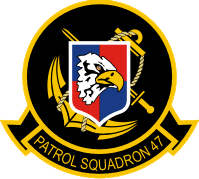
Patrol Squadron 47 (VP-47), also known as "The Golden Swordsmen", is a maritime patrol squadron of the United States Navy based at Naval Air Station Whidbey Island, Washington (USA), attached to Patrol and Reconnaissance Wing 10. The squadron currently flies the Boeing P-8A Poseidon.

Patrol Squadron Four (VP-4) is a U.S. Navy land-based patrol squadron based at the Naval Air Station Whidbey Island, Oak Harbor, Washington, which is tasked to undertake maritime patrol, anti-submarine warfare (ASW), and intelligence, surveillance and reconnaissance (ISR) missions flying the Boeing P-8 Poseidon.

Patrol Squadron 9 (VP-9) is a U.S. Navy patrol squadron with its homeport located at Naval Air Station Whidbey Island. As of 2018, VP-9 is part of Patrol and Reconnaissance Wing Ten, Commander, Naval Air Forces, Pacific.
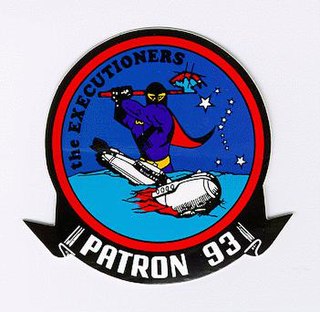
VP-93, nicknamed the Executioners, was a Patrol Squadron of the U.S. Navy Reserve. It was the second squadron to be assigned the VP-93 designation. The squadron was established on 1 July 1976 and disestablished 18 years later, on 30 September 1994. It flew the Lockheed P-3 Orion, and was based at NAF Detroit during its entire life. Units of the squadron made 17 major overseas deployments.

Fleet Logistics Support Squadron 64 (VR-64), nicknamed the Condors, is a logistics squadron of the U.S. Navy Reserve, based at Joint Base McGuire–Dix–Lakehurst. The squadron was established as Patrol Squadron 64 (VP-64) on 1 November 1970 and redesignated on 18 September 2004, after 34 years of service. It was based at NAS Willow Grove, Pennsylvania until it got transferred to Joint Base McGuire–Dix–Lakehurst in 2011. Units of the squadron made 26 major overseas deployments.
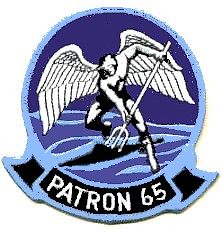
VP-65, nicknamed the Tridents, was a Patrol Squadron of the U.S. Navy Reserve. The squadron was established on 16 November 1970 at NAS Los Alamitos, California, and moved on 6 January 1971 to NAS Point Mugu. It was disestablished on 4 March 2006, after 35 years of service. Elements of the squadron made 22 major overseas deployments.
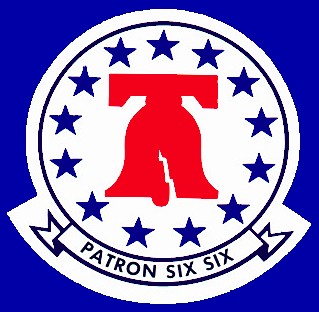
VP-66 was a patrol squadron of the U.S. Navy Reserve. The squadron was established on 1 November 1970 at NAS Willow Grove, Pennsylvania, where it was based for the rest of its life. It was disestablished on 31 March 2006, after 25 years of service. The squadron's nicknames were the Flying Sixes from 1971 to 1974, the Dicemen from 1975 to 1980, and the Liberty Bells from 1981 onward. Elements of the squadron made 19 major overseas deployments.
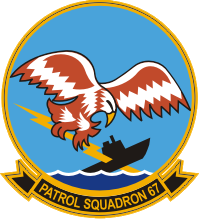
VP-67 was a Patrol Squadron of the U.S. Navy Reserve. The squadron was established on 1 November 1970 at NAS Memphis, Tennessee, where it was based for its entire life. It was disestablished on 30 September 1994, after 24 years of service. The squadron's nickname was the Golden Hawks, also unofficially called the Thunder Chickens. Elements of the squadron made 23 major overseas deployments.

VP-68 was a Patrol Squadron of the U.S. Navy Reserve. The squadron was established on 1 November 1970 at NAS Patuxent River, Maryland. Its home port moved to Naval Air Facility Washington in 1985. The squadron was disestablished on 16 January 1997, after 26 years of service. Its nickname was the Blackhawks from 1972 onward. Elements of the squadron made 28 major overseas deployments.
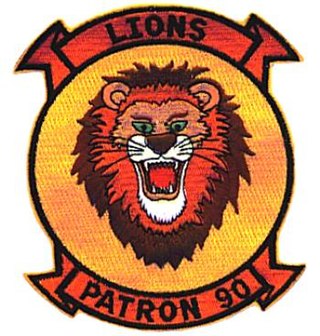
VP-90 was a Patrol Squadron of the U.S. Navy Reserve. The squadron was established on 1 November 1970 at NAS Glenview, Illinois, where it was based for the rest of its life. It was disestablished on 30 September 1994, after 25 years of service. The squadron's nickname was the Lions from 1974 onward. Elements of the squadron made 22 major overseas deployments.

VP-6 was a long-lived Patrol Squadron of the U.S. Navy, nicknamed the Blue Sharks. Originally established as Bombing Squadron VB-146 on 15 July 1943, it was redesignated Patrol Bombing Squadron VPB-146 on 1 October 1944, redesignated VP-146 on 15 May 1946, redesignated Medium Patrol Squadron (Landplane) VP-ML-6 on 15 November 1946, redesignated VP-6 on 1 September 1948 and disestablished on 31 May 1993. It was the third squadron to be designated VP-6, the first VP-6 was disestablished on 3 May 1926 and the second VP-6 was disestablished on 20 June 1945.

VP-48 was a long-lived Patrol Squadron of the U.S. Navy, nicknamed the Boomerangers from 1975 to 1980, and the Boomers from 1981 to 1991. It was established as Reserve Patrol Squadron VP-905 in May 1946, redesignated Heavy Patrol Squadron (Landplane) VP-HL-51 on 15 November 1946, redesignated VP-731 in February 1950, redesignated VP-48 on 4 February 1953 and disestablished on 23 May 1991. It was the second squadron to be designated VP-48, the first VP-48 was disestablished on 31 December 1949.
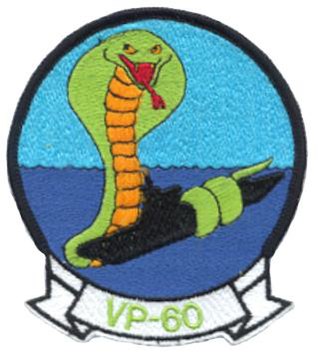
VP-60 was a Patrol Squadron of the U.S. Navy Reserve, based at NAS Glenview, Illinois. Its nickname was the Cobras. The squadron was established on 1 November 1970, and disestablished on 1 September 1994.
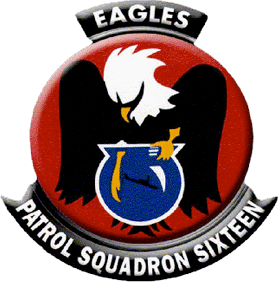
VP-16, nicknamed the War Eagles, is an active Patrol Squadron of the U.S. Navy. It has been based at NAS Jacksonville, Florida since its founding in 1946. The squadron's mission is to operate Maritime patrol aircraft to the fleet in support of national interests. Originally established as Reserve Patrol Squadron 906 (VP-906) in May 1946, it was redesignated Medium Seaplane Squadron 56 (VP-ML-56) on 15 November 1946, redesignated Patrol Squadron 741 (VP-741) in February 1950 and redesignated Patrol Squadron 16 (VP-16) on 4 February 1953. It is the third squadron to be designated VP-16; the first VP-16 was redesignated VP-41 on 1 July 1939 and the second VP-16 was redesignated VPB-16 on 1 October 1944.
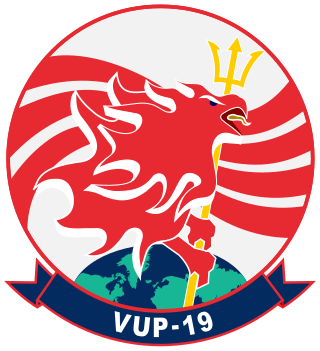
Unmanned Patrol Squadron 19 (VUP-19) is an unmanned patrol squadron of the United States Navy, nicknamed the "Big Red" and established on 1 October 2013.

VP-40 is a Patrol Squadron of the U.S. Navy. The squadron was established on 20 January 1951. It is the second squadron to be designated VP-40, the first VP-40 was disestablished on 25 January 1950.
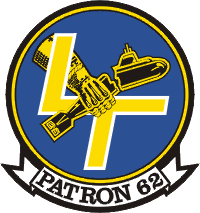
Patrol Squadron SIXTY TWO (VP-62) is a combat aviation squadron of the United States Navy Reserve. Since 31 July 2015, the squadron has been assigned to Commander, Maritime Support Wing, an Echelon IV organization under the Commander, Naval Air Force Reserve. Nicknamed the Broadarrows, the squadron flies the P-3C Orion maritime patrol aircraft from its home station of Naval Air Station Jacksonville, Florida, deploying worldwide. The squadron's aircraft can be identified by the stylized letters "LT" on the vertical stabilizer, the letter "L" being common to all U.S. Atlantic Fleet patrol aircraft, either Regular Navy or Navy Reserve, and the letter "T" being unique to VP-62. The stylized "LT" is also incorporated in the squadron's insignia as worn as a cloth patch on flight suits and flight jackets.
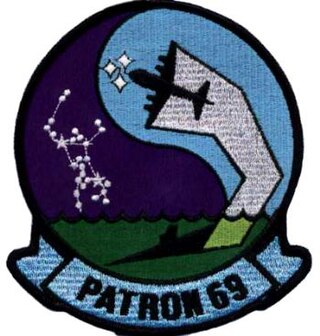
VP-69 is a Patrol Squadron of the United States Navy Reserve. The squadron was established on 1 November 1970.





















